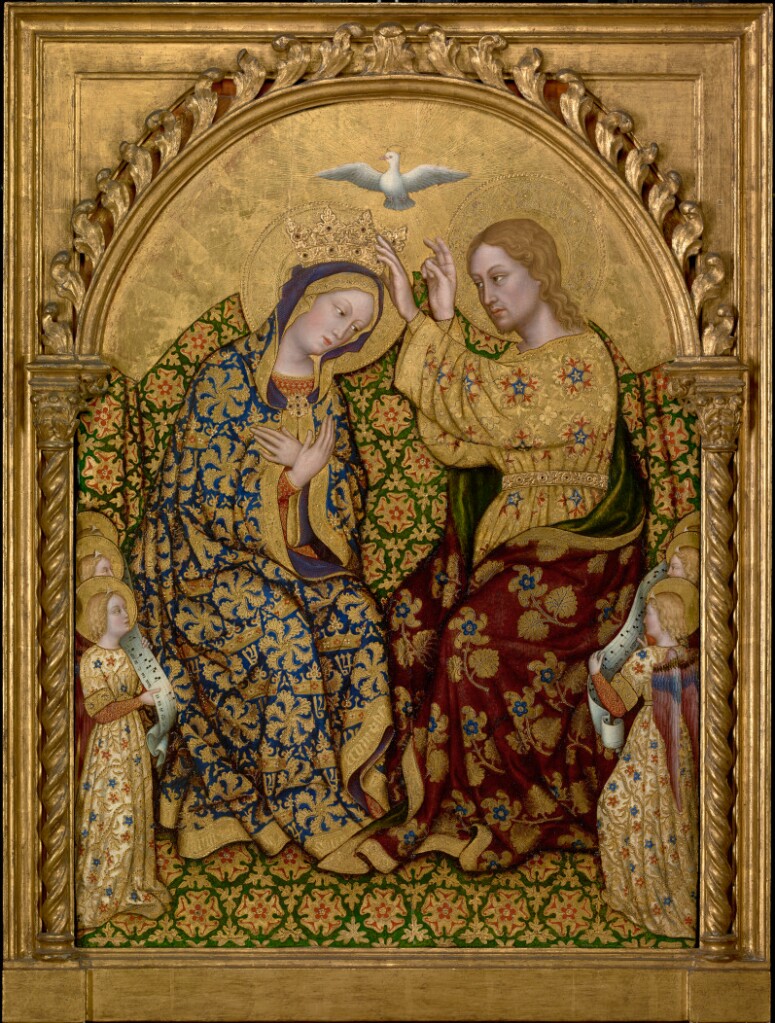
Shimmer and Surfeit: Gold from Gothic Italy to Cattelan's America
Anne Dunlop, the Herald Chair of Fine Arts in the Department of Art History, Curatorship, Arts & Culture at the University of Melbourne, came to Brown in February with joint invitations to give a series of talks and workshops for the Center for Study of the Early Modern World, Italian Studies, and History of Art & Architecture. The enthusiasm of several departments for her visit is a tribute to the interdisciplinary quality and cross-cultural significance of her research on art and exchange, which currently engages Italy and Asia in the medieval and early modern periods.
Her lecture for the Center (co-sponsored by the History of Art & Architecture), Shimmer and Surfeit: Gold from Gothic Italy to Cattelan's America, examined the bases of the persistent passion for reflective, shimmering gold leaf in late medieval European altarpieces. By following the trade in gold from Mongol Eurasia to the workshops of Sienese and Florentine painters, Dunlop brought us into the communities of artists and merchants who obtained gold to produce the transcendent and mysterious qualities of paintings made for pious patrons, or those who wished to advertise their piety. As Dunlop has remarked, "materials themselves bring with them to the object their own histories of origins and associations." In this way the mysteries associated with the Orient, not least the esoteric religious knowledge protected by sphinxes associated with Egypt, Greece and Persia, were evoked by the sensory disorientation experienced from the glaring effects of oil lamps and candles illuminating the heavily worked gold backgrounds on which the narrative paintings of miracles were sometimes difficult to focus.
Dunlop highlighted questions about miracles and knowledge, showing how visibility, and the invisibility that accompanied the difficulty of focusing on reflective surfaces induced a sense of wonder. Such astonishment aided worshippers in accepting the miracles that they could not see, but were required to accept, if the religious practices for which altarpieces were designed were to be efficacious. Her discussion ranged from the sale of gold to the manufacture of gold leaf, the conditions of viewing painted figures against burnished gold backgrounds and the challenges of focusing a camera lense on a flat, reflective surface. This brought us up to the reputation, aura and theft (and, for now, the concurrent invisibility) of Maurizio Cattalan's functioning, solid gold privy, an artwork titled "America," that was installed in, and then stolen from, Blenheim Palace in 2019.